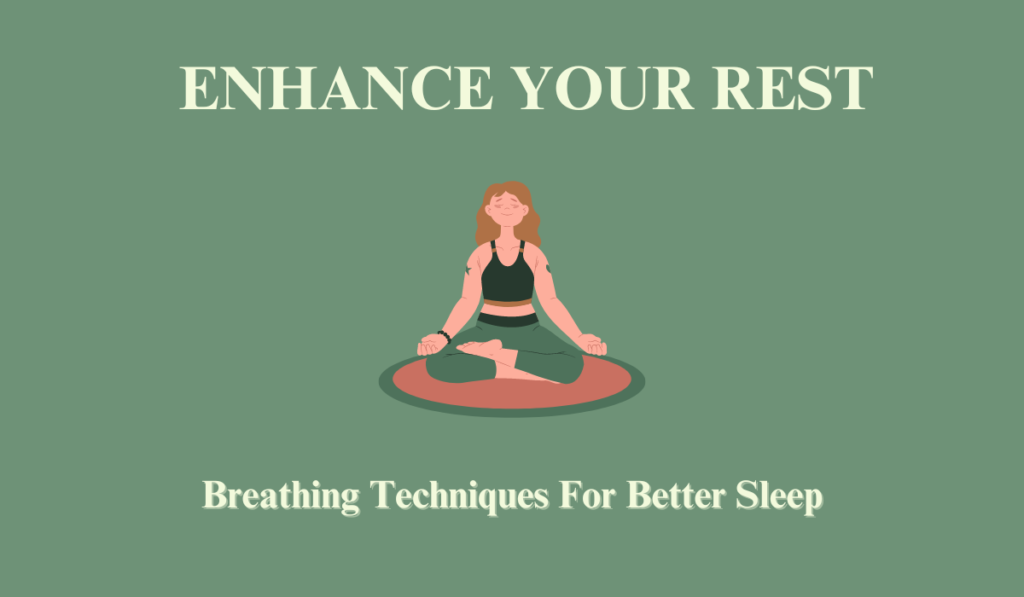When Ali started having trouble falling asleep, she tried just about everything to improve things. She read books on relaxation and sleep practices, tried drinking chamomile tea before going to bed, and even counted sheep.
Nothing seemed to work. She was about to give up hope when she remembered how her yoga teacher had told her how deep breathing calmed the body and mind.
So, she decided to give it a try. Ali took a few deep breaths and soon felt her body slacken and feel less tight. She began to feel drowsy and before long, she was fast asleep.
She woke up feeling refreshed and energized, ready to start a brand new day.
Today, deep breathing is now her go-to method for falling asleep quickly and easily.

POST CONTENTS
Breathing for Better Sleep: 2 Key Techniques to Help You Rest
Sleep is an essential part of our overall well-being, and the quality of our rest has a major impact on both our physical and mental states. One of the most important, yet often overlooked, factors affecting sleep quality is our pattern of breathing.
By learning and adopting certain breathing techniques, we can significantly improve our nighttime slumber.
Below are two innovative methods that will help you fall asleep and relax your muscles at the same time.
Box Breathing
Box breathing is a breathing method that helps soothe and promote rest before bedtime.
Here’s how to do it:
Every step you practice involves four counts. So, it’s easy to inhale, hold your breath, exhale, and, again, hold your breath.
Just like a box, which features four borders, this breathing technique features four boundaries for practicing and counting breaths.
- Inhale slowly through your nose for a count of four.
- Hold your breath for a count of four.
- Exhale slowly through your mouth for a count of four.
- Hold your breath again for a count of four.
Repeat the above cycle for several minutes, or four times.
Try to maintain an even and consistent rhythm throughout the exercise to maximize its benefits.
Progressive Muscle Relaxation (PMR)
While not strictly a breathing technique, PMR can be combined with mindful breathing to create an effective pre-sleep routine. PMR involves tensing and relaxing different muscle groups in the body, which helps to alleviate physical tension and induce sleep.
Follow these steps:
- Begin the breathing exercise, starting at your feet. and work your way up through each muscle group (calves, thighs, hips, abdomen, chest, arms, shoulders, and face).
- As you inhale deeply, tense a specific muscle group for a count of five.
- Exhale slowly as you release the tension in that muscle group.
- Give yourself a few moments to relax before moving on to the next muscle group.
Final Thoughts on Deep Breathing for Sleep
Breathing practices can have a profound effect on your ability to fall asleep and enjoy restful nights. By incorporating the two methods listed above into your bedtime routine, you can wake up refreshed – ready to take on whatever challenges the day might bring.
So, take a deep breath — better sleep is just a few inhales and exhales away.
Disclaimer: The contents of this website are for educational purposes and are not intended to offer personal medical advice. You should seek the advice of your physician or other qualified health provider with any questions you may have regarding a medical condition. Never disregard professional medical advice or delay in seeking it because of something you have read on this website. The Nutrition Source does not recommend or endorse any products.

It is very useful content to overcome my insomina
It is very useful information about Breathing For Better Sleep.
It is very useful to know about breathing exercise. This is very helpful content .
I’ve gone through your blog. In a few days, I was so insomniac, this is very helpful content to overcome my insomnia.